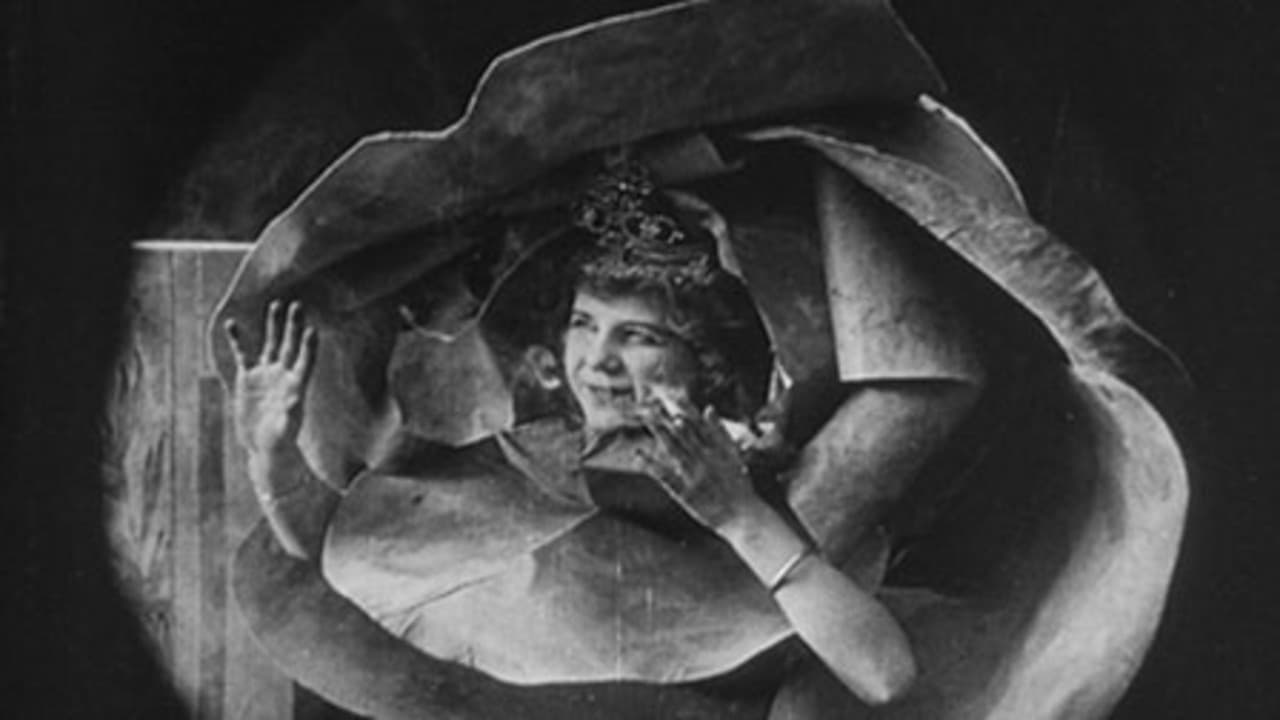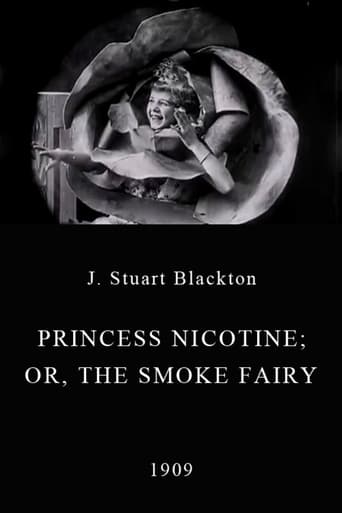

"Princess Nicotine; or, The Smoke Fairy" is a 5-minute black-and-white short film from considerably over 100 years ago, so it's obviously still a silent movie. There are only really 2 interesting aspects about this one. First of all, the inclusion of "or" in the title. I guess the maker behind this wasn't sure what title to choose, so he went with both, something we still see today in films. The second would be the inclusion of smoking in here. It was a common content in early films in terms of documentaries during which we see people smoke, but as the real core of the film it's something that stands out. Unfortunately the story does not, so I cannot really see why this short film is still semi-popular today. Maybe the reason is that director J. Stuart Blackton as well as actors Paul Panzer and Gladys Hulette had long successful careers in the industry and the film's cinematographer even won an Oscar later on. Their collaboration here made it into the National Film registry. I am not a fan though. Not recommended.
... View MoreOver 100 years old now, but this film still contains some tricks that, while obviously not looking as realistic as today's computer-generated trickery, are at least as good as the stuff the likes of Ray Harryhausen was producing as late as the 1980s.The film is quite unique in the way it combines long shots of the mischievous fairy capering on a table with close-ups of her standing amongst over-sized props, and it's a technique that enhances the realism of the special effects for the viewer. Today, it's easy to forget you're watching screen trickery when you see the same kind of special effects that are on display here, and too easy to be distracted by the flaws of vintage effects, but that's not the case with this one. It's likely that Vitagraph set out to make a blockbuster special effects movie with this one, and they quite obviously succeeded. Well worth seeking out.
... View MoreI watched this short silent film online tonight and it was identified as a film by the genius French director Georges Méliès. However, when I looked on IMDb, it said it was by J. Stuart Blackton! Obviously SOMEONE is wrong! While watching it, I sure thought it was a Méliès film because it was so creative and the camera tricks were so masterfully done. If it IS a Méliès film, then it's pretty typical of the amazing stuff he did. If it is NOT, then obviously by 1909 other directors starting imitating his style and techniques. Regardless WHO is responsible, it is a cute and interesting little film well worth seeing--particularly by Cinephiles like myself.If you want to see this movie yourself, you can see it online at http://www.archive.org/search.php?query=melies
... View MoreAs a longtime fan of the early "trick films" I can heartily recommend this bizarre and ingenious exercise in nickelodeon surrealism. Although it doesn't display the boisterous showmanship of Georges Méliès' mini-epics, or rival the sheer beauty of Ferdinand Zecca's The Red Spectre (the trick film nonpareil), Princess Nicotine; or The Smoke Fairy can nonetheless hold its own as a clever, funny, and downright eerie exploration of the cinema's potential to capture fantasy on celluloid.Produced at Vitagraph's Brooklyn studio, the film features a mustachioed actor named Paul Panzer who would become best known playing the villain in the famous serial The Perils of Pauline. Here we see Mr. Panzer as a proper Edwardian gentleman seated, presumably in his home, at a table as well stocked as any tobacconist's shop with cigars, cigarettes, pipe, loose tobacco, and wooden matches. As the film begins, the gentleman puts aside his newspaper and yawns and stretches in a histrionic fashion, suggesting he's already half asleep and that what follows may be a dream. Certainly what follows is dreamlike, for almost immediately the lid of a cigar box swings open and two fairies about the size of hamsters emerge. One fairy is a young girl while the other looks more mature and Glinda-like. The older fairy seems to be encouraging the girl to cause mischief, which she is only too happy to do. The gentleman realizes he is not alone when he attempts to light his pipe and finds a giggling fairy in the bowl, underneath the tobacco. The rest of the film involves a battle of wills between the gentleman and the fairy, as each one strives to hassle, harass, and torment the other. In the end, the battle is essentially a draw.The filmmakers utilized every camera trick available at the time to achieve their desired effects, and may well have concocted new ones. Double exposure, reverse image, and stop-motion photography were all employed, as well as two old-time stage tricks: enlarged props and images reflected in mirrors. A book about motion pictures by Frederick Talbot published in 1912 devoted an entire chapter to this eight- minute film, and it's easy to see why: this movie represented state-of-the- art special effects for its day. Almost a century later, Princess Nicotine is still a delightful treat.
... View More